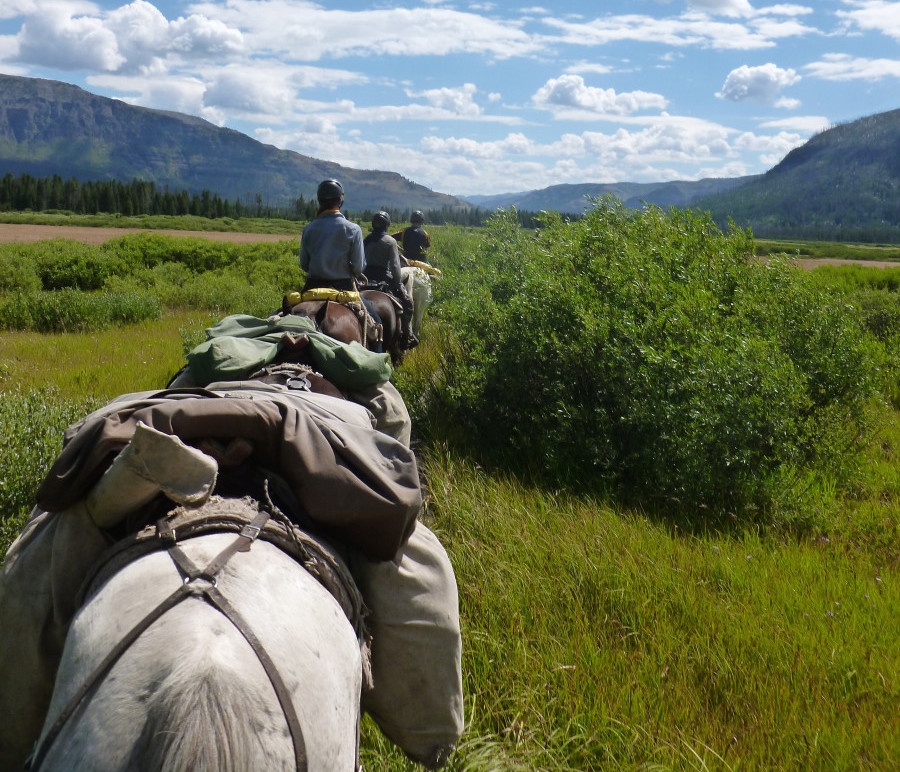
The Setting
It's five days into sea kayaking with friends in Prince William Sound, Alaska, and you feel lousy: some diarrhea, some vague abdominal cramping, not much appetite. You assume it's a touch of the flu and don't say anything. The next day you feel better and paddle all day.
But that night you wake with the worst abdominal pain you have ever experienced. You endure it quietly and it subsides after 30 minutes. At breakfast you tell your companions about it.
The Wilderness First Responder (WFR) in the group starts asking a series of questions that they write into a document they call a SOAP report. You don't think you're very ill, but they're your friend, so you allow them the chance to do their "patient assessment."
SOAP Report
Subjective
Patient is a 26 year old male whose chief complaint is "I don't feel great, but I've felt worse."
He appears pale, with normal mental status and can walk. He states he has been feeling poor for the past 2 days with occasional diarrhea. He has been able to paddle his sea kayak on several long days.
Last night he had 30 minutes of the "worst hard cramping pain he has ever experienced." "I have a new 10 on a 1-10 scale."
He also reported his "belly was hard as a rock." The episode subsided and the patient was able to sleep the remainder of the night.
Objective
Patient Exam
Patient denies any recent injury and we have been together and have not witnessed any injury. He refuses a head-to toe exam, but agrees to an abdominal exam. He has some tenderness throughout his abdomen, no localized pain, but sharp pain in his lower right belly upon a tap on his right foot.
Vital Signs
|
Time |
7/23 8:30 AM |
7/23 9:30AM |
|
Level of Responsiveness (LOR) |
A+Ox4 |
A+Ox4 |
|
Heart Rate (HR) |
90 strong, regular |
94 strong, regular |
|
Respiratory Rate (RR) |
15 regular, easy |
15 regular, easy |
|
Skin Color, Temperature, Moisture (SCTM) |
Skin warm, dry, mucous membranes pink |
Skin warm, dry, mucous membranes pink |
|
Blood Pressure (BP) |
strong radial pulse |
strong radial pulse |
|
Pupils |
not taken |
not taken |
|
Temperature (T°) |
98.4°F (36.8°C) oral |
not taken |
History
|
Symptoms |
At present he has constant and dull generalized abdominal pain that is a 2 compared to last night's 10. States he has general feeling of being “sick.” |
|
Allergies |
Denies allergies. |
|
Medications |
Has been taking 400mg ibuprofen 4x a day for the past week for shoulder aches. |
|
Pertinent Hx |
None. Patient has his appendix. |
|
Last in/out |
Has been well hydrated with clear yellow urine past several days, drank several cups of water this morning. No BM. He ate a light breakfast. |
|
Events |
Feeling ill past several days. |
Stop reading!
What is your assessment and plan? Take a few minutes to figure out your own assessment and make a plan. Don’t cheat—no reading on without answering this first!

Assessment
- Possible gastroenteritis
- Possible appendicitis or other bad abdominal problem
Plan
- Convince the patient to be evacuated.
- Arrange the evacuation with our marine band radio.
- Monitor vitals
Anticipated problems
- Gastroenteritis worsens into a debilitating illness
- Abdominal pain returns
Comments
This is a true tale. A group of friends was sea kayaking when one fell ill. The WFR in the group was very concerned and argued that the episode of localized pain triggered one of the evacuation guidelines in his NOLS Wilderness Medicine Field Guide.
Using OPQRST to evaluate the pain, he found:
- Onset: over several days with an acute episode last night.
- Provoked and Palliated: by nothing obvious.
- Quality: "hard cramping"
- Region: abdomen, no radiation.
- Severity: A "10," at present is 2
- Time: The pain episode lasted 30 minutes, the overall illness three days.
Generalized abdominal complaints are common in backcountry settings. Most of these are gastroenteritis, uncomfortable but not urgent, yet some could be a more serious problem that is beyond the skills and experience of a WFR to evaluate.
These difficult cases need to be seen by a physician, but sorting which episodes of belly pain can stay in the field and which ones need to be evacuated is not easy.
Our approach, as lay wilderness medicine practitioners, is to perform a thorough assessment, review the information, and use an abdominal pain evacuation protocol to make a sound decision.
NOLS Wilderness Medicine’s suggested evacuation guidelines for abdominal pain are based on expert opinion and have served NOLS instructors well as guidance for this decision.
Suggested Evacuation Guidelines for Abdominal Pain
Evacuate any patient who has:
- Pain inconsistent with a simple UTI or gastroenteritis
- Signs and symptoms or the possibility of pregnancy
- Persistent or worsening gastroenteritis (crampy, diffuse, or intermittent pain) over 24 hours, spiking fever, bloody diarrhea, or dehydration
- Inability to tolerate any oral fluids for more than 24 hours, especially if accompanied by diarrhea volume losses or fever
Rapidly evacuate a patient with abdominal pain that is:
- Persistent for 12 hours, especially if constant, localized, or worsening
- Accompanied by guarding, tenderness, distension, rigidity
- Produced or aggravated by movement, jarring or foot strike
- Accompanied by blood in the urine, vomit, or feces
- Accompanied by fever > 102°F (39°C)
- Accompanied by signs and symptoms of shock
The Tale Continues…
The WFR argued that the severe localized pain the night before warrants an evacuation. The patient was reluctant to leave the trip and asked that they not use their marine radio to arrange an evacuation—he was feeling better and thought the episode was over. However, he agreed to the group beginning to paddle back toward the nearest town, just in case.
They broke camp and started the paddle. Initially, the patient felt fine. But after a few hours, he began to feel ill and developed abdominal pain. As they paddled swells, the pain worsened with every bump of the kayak until he was obviously uncomfortable and vomited his breakfast, without blood.
His friends said, "Enough is enough" and used the radio to contact the Coast Guard. They paddled to a nearby fish hatchery, where a helicopter picked up the patient.
End of the Tale
This patient had a ruptured appendix. In hindsight the surgeon believed it ruptured in the severe pain episode the previous night. He developed a serious abdominal infection and had a long hospital stay. He has completely recovered.
The protocol may not have caught this appendix before it ruptured, but the evacuation would have been sooner if they had agreed to it on the beach.
Human dynamics come to play in every decision, and the stoic endurance of the pain, while admirable, was in this case unwise. The patient remarked that this experience, his first serious medical problem, has made him aware that he has a tendency to deny physical complaints. His friend, the WFR, was proud of his skills and mulled over whether he could have been more persuasive at the camp. Lessons for all.
Keep your skills fresh: Recertify with NOLS Wilderness Medicine.
Written By
Tod Schimelpfenig
As a NOLS Instructor since 1973 and a WEMT, volunteer EMT on ambulance and search and rescue squads since the 70s, Tod Schimelpfenig has extensive experience with wilderness risk management. He has used this valuable experience to conduct safety reviews as well as serve as the NOLS Risk Management Director for eight years, the NOLS Rocky Mountain Director for six years, and three years on the board of directors of the Wilderness Medical Society, where he received the WMS Warren Bowman Award for lifetime contribution to the field of wilderness medicine. Tod is the founder of the Wilderness Risk Manager’s Committee, has spoken at numerous conferences on pre-hospital and wilderness medicine, including the Australian National Conference on Risk Management in Outdoor Recreation, and has taught wilderness medicine around the world. He has written numerous articles on educational program, risk management and wilderness medicine topics, and currently reviews articles for the Journal of Wilderness and Environmental Medicine. Additionally, he is the author of NOLS Wilderness Medicine and co-author of Risk Management for Outdoor Leaders, as well as multiple articles regarding wilderness medicine. Tod is the retired curriculum director for NOLS Wilderness Medicine and is an active wilderness medicine instructor




